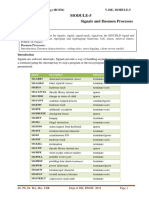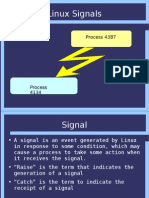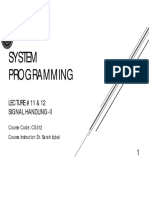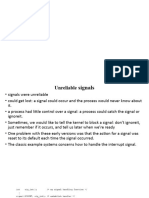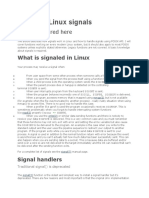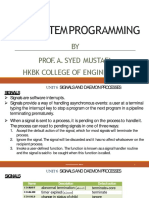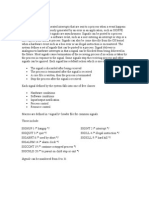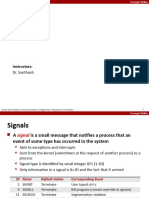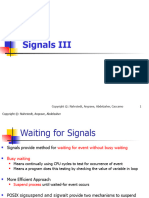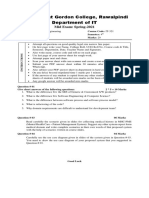0% found this document useful (0 votes)
25 views13 pagesUnix System Progamming
Signals allow processes to asynchronously notify and respond to events. When a signal is generated by an event like a keyboard interrupt or error, the kernel sets a flag for the target process. The process can then define handlers for signals or accept the default response. Signal masks define which signals a process blocks from being delivered. Functions like sigprocmask() and sigsetops() allow processes to manipulate their signal masks.
Uploaded by
Shivanand ManjaragiCopyright
© © All Rights Reserved
We take content rights seriously. If you suspect this is your content, claim it here.
Available Formats
Download as PDF, TXT or read online on Scribd
0% found this document useful (0 votes)
25 views13 pagesUnix System Progamming
Signals allow processes to asynchronously notify and respond to events. When a signal is generated by an event like a keyboard interrupt or error, the kernel sets a flag for the target process. The process can then define handlers for signals or accept the default response. Signal masks define which signals a process blocks from being delivered. Functions like sigprocmask() and sigsetops() allow processes to manipulate their signal masks.
Uploaded by
Shivanand ManjaragiCopyright
© © All Rights Reserved
We take content rights seriously. If you suspect this is your content, claim it here.
Available Formats
Download as PDF, TXT or read online on Scribd
/ 13


